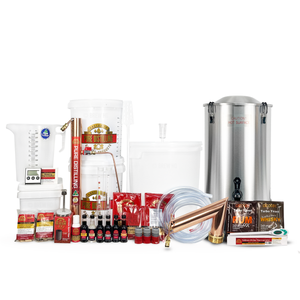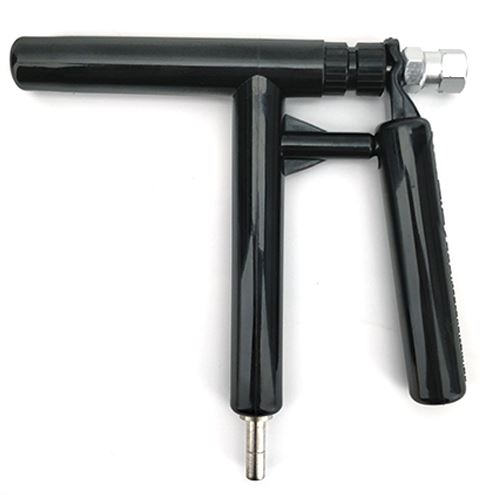Before you begin:
We highly recommend performing a leak test on your CO2 module. This is done by:
1. Connect your CO2 regulator to your CO2 bottle. Connect the tube with the grey disconnect to the duo tight fitting on the regulator ensuring it is pushed all the way in.
2. Ensure the regulator knob is unscrewed. If not turn it counterclockwise until resistance can no longer be felt.
3. Turn on your CO2 bottle by turning the valve counterclockwise.
4. Turn the regulator knob until you feel resistance again, check the low pressure dial and continue turning clockwise until 30psi is reached.
5. Turn the CO2 bottle off at the valve and leave the bottle to sit for 3 hours.
6. Come back to the bottle ensuring the low pressure dial of your regulator reads 30psi still. If not there is a leak and this will need to be located before kegging. The best practise is to spray all the connection points with soapy water.
Carbonation:
The process of carbonating beer using kegs is similar to the way a Sodastream works. A high pressure of CO2 is applied to the headspace of the keg forcing CO2 to dissolve into solution.
CO2 is much more soluble in lower temperatures, ensuring your beer is cold before attempting to carbonate will not only save time, but also mean you can follow one of the carbonation schedules seen in the table below.
Step by step guide:
1. Sanitise your keg with your preferred sanitiser, ensure the dip tubes and posts also make contact with your sanitiser as they can harbour bacteria and are often missed.
2. Transfer your beer into the keg, ensure not to splash the beer. Fill the keg until just below the gas dip tube.
3. Close the keg using the keg lid then attach your CO2 line.
4. Apply 10-12 psi to the keg and pull the pressure relief valve a few times. This process purges the keg, removing oxygen from the headspace. Oxygen is detrimental to beer flavour and aroma at the packaging stage.
5. After purging the keg you can set your regulator to your chosen carbonation pressure (refer to the table below) for that period of time. Ensure the CO2 bottle is not turned off, CO2 will need to be continuously supplied to carbonate the beer.
6. After your beer has sat at your carbonation pressure for the reccomended period of time disconnect the gas line and screw the regulator dial counterclockwise to drop the pressure. While doing this pull the Pressure release valve on the regulator. Set the regulator to 10-12psi.
7. Pull the Pressure release valve on your keg to drop the pressure then reattach the CO2 line. Your keg should now be at 10-12psi. This is our serving pressure. You can now begin drinking. When your not dispensing we recommend turning the CO2 bottle off at the valve to ensure slow leaks don't drain your bottle or your beer doesn't over carbonate.
| Carbonation Pressure |
Carbonation Time |
| 12 psi |
2 weeks |
| 20 psi |
1 week |
| 30 psi (our favourite) |
48 hours |
| 40 psi (plus shaking the entire time) |
1 minute |






